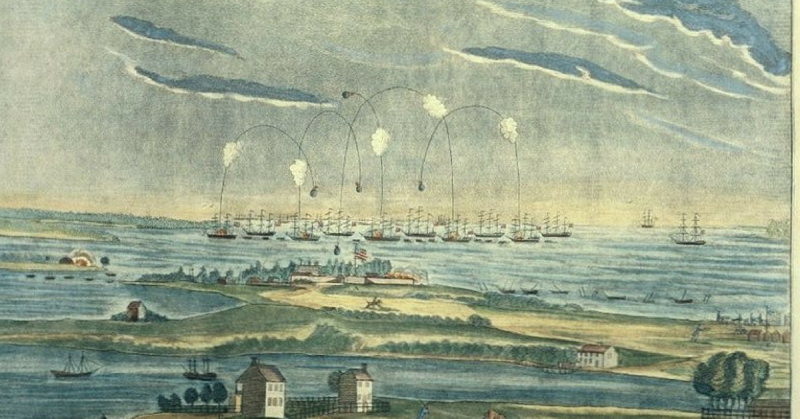On September 12, 1814, HMS Erebus sailed up the Patapsco river toward Baltimore. The British Royal Navy had been roaming free throughout Chesapeake Bay for the last three years, had recently captured and burned Washington D.C., and was preparing for a final assault that would crush American resistance in the region. One of their key weapons in the attack was one new to North American warfare: Congreve rockets aboard the Erebus.
The British military had encountered rocket artillery as an effective weapon of modern warfare in southern India in the late 18th century, when the rockets were used against them by the forces of Tipu Sultan. In 1804 the 32-year-old English inventor William Congreve heard the stories of Tipu Sultan’s rocket brigades and set out to build rocket weapons for the British military.
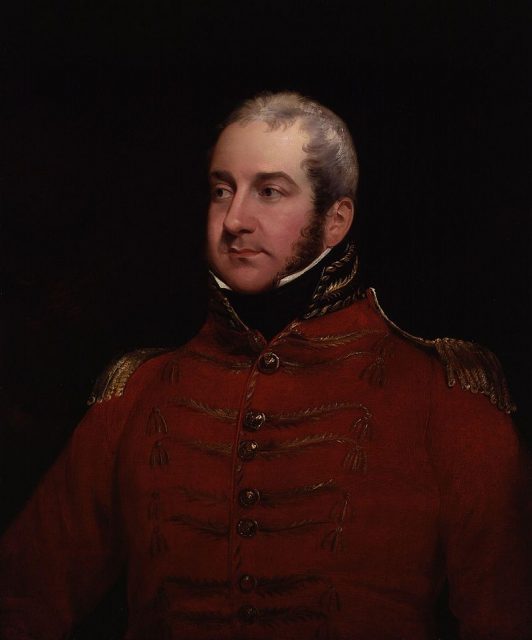
The British had rockets at the time, but they were light, short-range devices that offered little military usefulness. Congreve invested his own money in building a prototype of a heavier rocket with a range exceeding 1,500 yards, and with it was able to acquire support from Lord Chatham at the Ordnance Department to produce a larger quantity of experimental rockets.
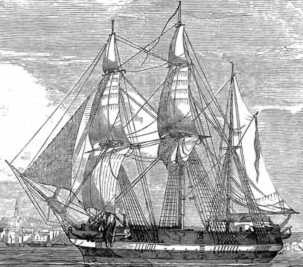
The rockets were first tested in the Royal Navy. The first test at Boulogne in the fall of 1805 was unsuccessful due to weather, but Congreve and the Navy persisted, and in October of 1806 returned to bombard Boulogne with two thousand rockets.
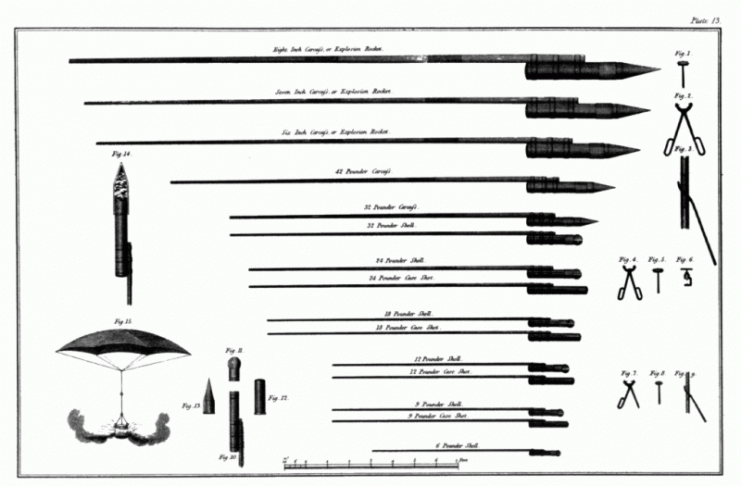
Very limited accuracy, primitive warhead design, and inability to control detonation limited the effectiveness of Congreve’s rockets. Essentially large iron tubes full of burning gunpowder, the rockets were most effective as incendiary devices. They showed that effectiveness in 1807 when the British fleet burned Copenhagen by bombardment.
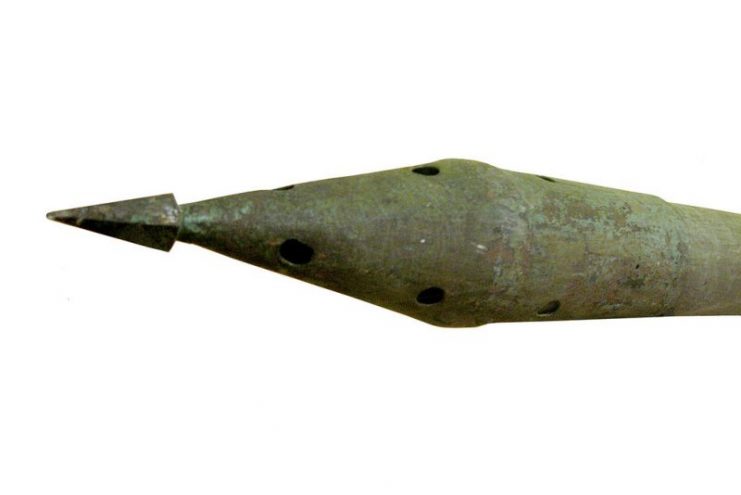
The Royal Navy also constructed two ships specifically to carry and launch large-scale Congreve rockets. HMS Gaigo was constructed in 1809, and HMS Erebus in 1814. Both were conversions of ships originally built for other purposes.
Erebus did not have an auspicious beginning. She was built in 1808 as a fireship, a cheap hull rigged as a sloop that could be sailed into enemy formations and set on fire. But when no opportunities were found to use her that way in the Baltic campaign, she was re-rated as a sloop and used to raid Danish and Russian shipping. After the end of the Anglo-Russian War she returned to Great Britain and was refitted as a rocket ship for the American war.
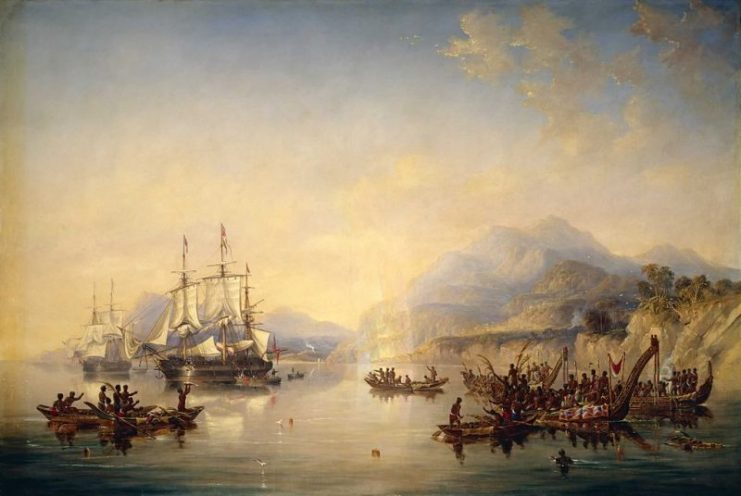
In late August 1814 Erebus participated in the destruction of Fort Washington, a small fortification that inadequately protected the United States capital. In early September she participated in the capture and looting of Alexandria. But it was in mid-September in Baltimore that her rockets would become a permanent part of the consciousness of a nation.
Before the Battle of Baltimore, the British had roamed freely throughout the Chesapeake Bay region, raiding and burning almost at will, opposed only by disorganized militia parties. They had even burned their enemy’s capital city. But at the time Baltimore was much more of a prize than Washington.
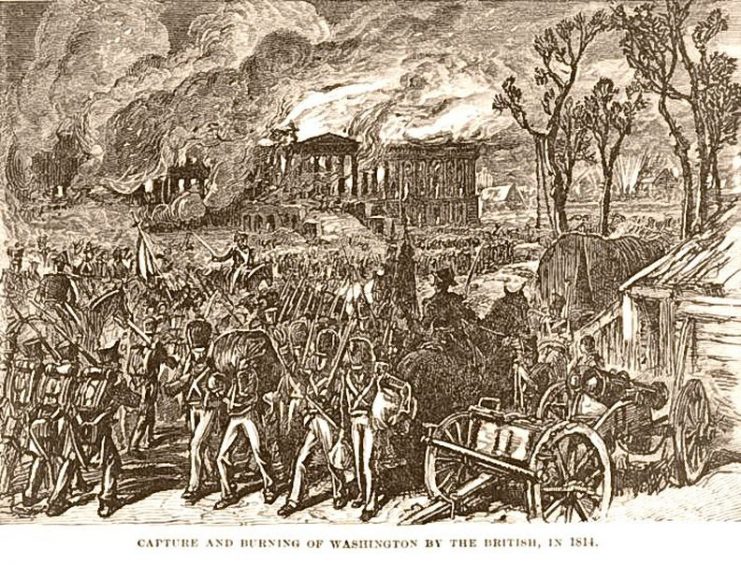
It was an economic hub, and more importantly the home of America’s fleet of privateers. Taking the city would be a key step toward ending the war with what seemed like an inevitable British victory.
But Baltimore resisted. The combined forces of the Army and the Maryland Militia, under the command of Revolutionary War hero Samuel Smith, stopped the British land advance cold on Patapsco Neck, killing their ground commander. If the British were going to take the city it would have to be from the water.
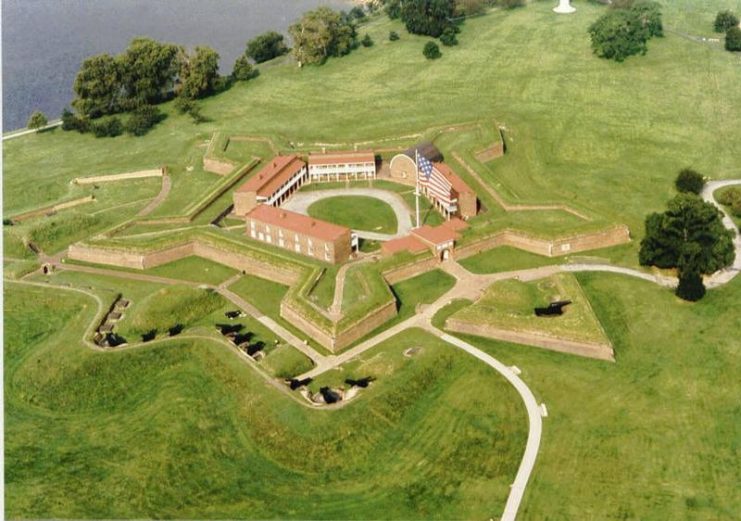
Baltimore Harbor was protected by Fort McHenry, a stone, earth, and brick fort built in 1798. To get to the city the British ships would first have to reduce the fort, and that was where Erebus was called in. Her long-range Congreve rockets were able to shell the fort from a distance the Americans could not match.
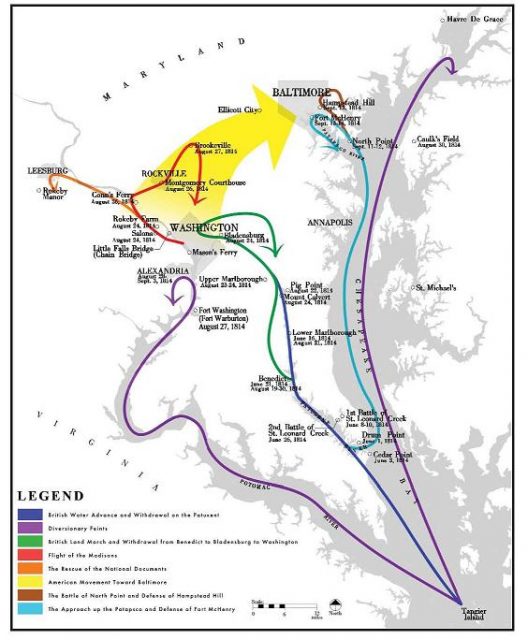
Erebus was fitted with ten ports on each side that allowed her to launch rockets from beneath the deck of the ship at angles of 50 to 55 degrees. During the battle she fired hundreds of rockets from a distance of over 3,000 yards, although only a small percentage of them reached the fort.
Fort McHenry was made of sterner stuff than Copenhagen had been. Fort McHenry’s commander, Major George Armistead, sensibly separated his powder magazine into small batches so that none of it could critically explode, and rode out the rocket assault. With nothing to set afire, Congreve’s rockets were minimally effective.
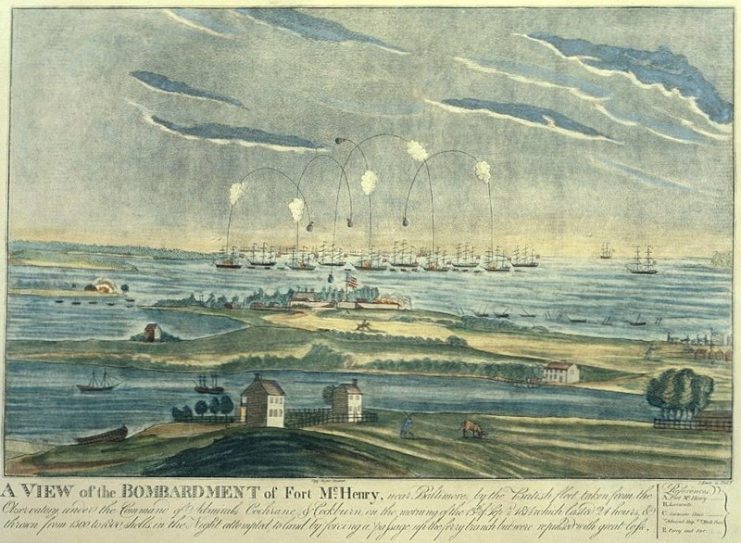
On the morning of the 14th, it was clear to the British that their hopes of taking Baltimore would be fruitless. Each of their avenues of attack had been repulsed by the well-organized Americans. They sailed away with the American flag still flying over the fort.
Watching the battle from one of the British ships was an American lawyer named Francis Scott Key. Key had approached the British fleet before the battle under a flag of truce to negotiate the release of a prisoner. While his mission was successful, he was held through the battle in order to keep him from giving information about the British plans to his countrymen.
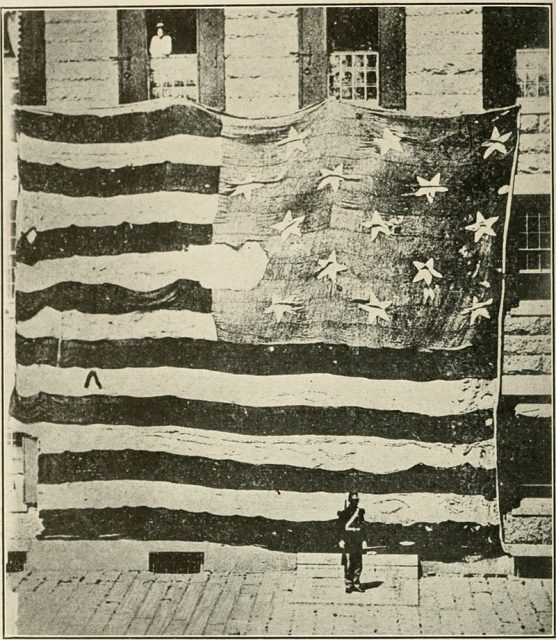
This left Key with a unique perspective on the last-ditch defensive stand by his country, and led him to pen a poem he called “Defense on Fort McHenry.”
Read another article from us – Outnumbered 2 to 1 the British and Tecumseh Took Fort Detroit
Key’s words were later set to music by British composer John Stafford Smith, and in 1931 the combination was declared the national anthem of the United States. Today Erebus and Congreve’s rockets are long gone, but they live on in song.
And the rockets’ red glare, the bombs bursting in air,
Gave proof through the night that our flag was still there.
